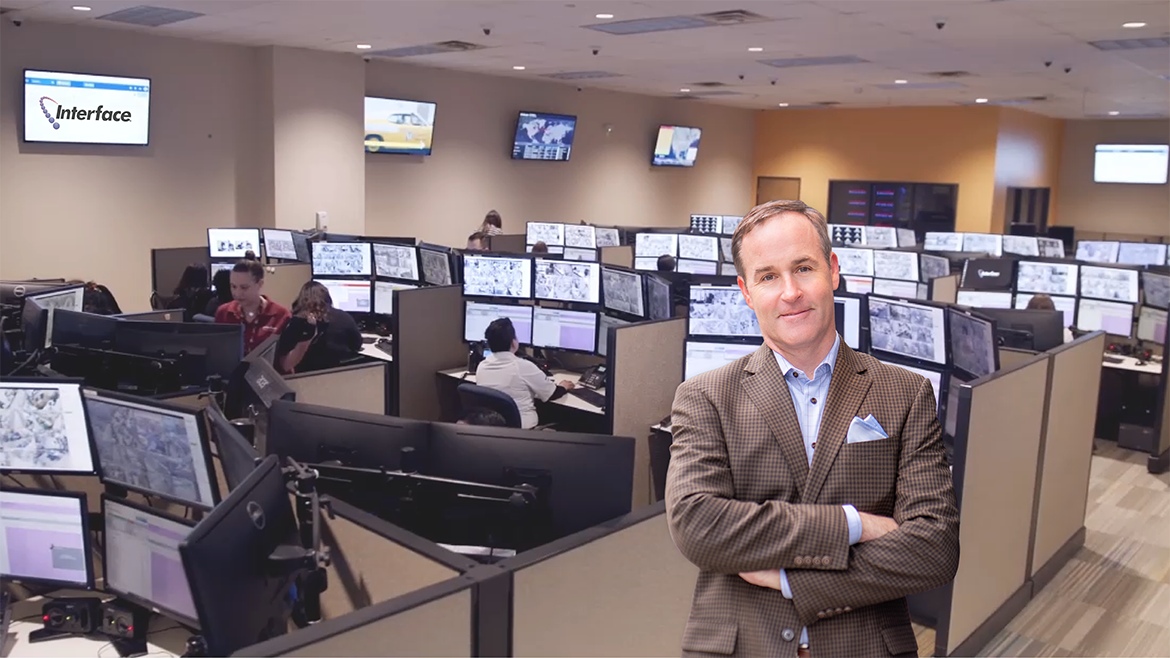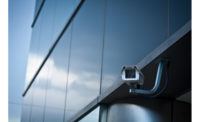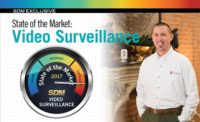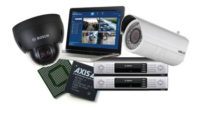Supply chain issues, hiring challenges and ongoing COVID-19 concerns may have shaped 2021, but none of these were able to put a damper on the steady growth of demand for video surveillance products and services.

In the annual SDM 2022 Industry Forecast, manufacturers, dealers and integrators rated sales of on-premise and cloud-based video surveillance systems a 3.8 out of 5 (5 being excellent), up from 3.6 last year. Video surveillance once again topped the short list for rewarding market segments in 2021, followed closely by access control and intrusion alarms.
The ranking reflects a market segment that’s been supercharged by a blend of technology and social trends, making video surveillance more attractive than ever to end users.
“We are at a crossroads in this space,” says Sean Foley, senior vice president, enterprise security at Interface Security Systems, an integrator based in Earth City, Mo. “This is due to a convergence of AI developments, cloud computing and processing power. Those three things are coming together in a way they never have before,” he says, adding that this is enabling the industry to deliver new solutions to the edge and the end user.
Integrators Rate Their Confidence in the Video Market
For the past five years, SDM has asked security systems integrators how they would rate the current state of the video surveillance market.*
92 percent of the respondents to the SDM 2022 Industry Forecast rated their confidence in video surveillance systems as excellent to good, with only 9 percent believing it was fair/poor. Video remains the technology with the highest confidence among all respondents. // SOURCE: SDM 2018, 2019, 2020, 2021, AND 2022 INDUSTRY FORECAST STUDIES
On the service side, 64 percent of respondents to SDM’s Industry Forecast said they are currently offering remote video monitoring, and 63 percent are offering video surveillance as a service (VSaaS). Most respondents — 69 percent — said they plan to offer remote video monitoring in the next two years.
For revenue by product type, video surveillance systems have led the SDM Industry Forecast list for the past four years. They comprised 23 percent of revenues in 2021, compared with 24 percent in 2020 and 19 percent in 2019. In addition, new technologies like AI and cloud are opening the door for more RMR opportunities related to the market segment (see sidebar). (link to sidebar 2)
Fredrik Nilsson, vice president, Americas, Axis Communications, Chelmsford, Mass., says, “Overall, the ability to help businesses find new solutions and gain value from network devices and systems has propelled the industry over the past two years. … Our solid performance in 2021 is a testament to the versatility of network technology and open platforms, which have provided innovative ways to increase security, improve operations, and enhance customer experience.”
The evolution of COVID-19 has played a significant role in this growth. A recent global study on video monitoring published by video analytics provider Calipsa finds that as some pandemic restrictions are lifting, security businesses are reaping the benefits. Eighty-four percent of video monitoring businesses reported growth in 2021, and none reported a decline. Small security businesses won big in 2021, with 79 percent reporting growth, compared with 59 percent in 2020.
The Biggest Drawback: Supply Chain Uncertainty
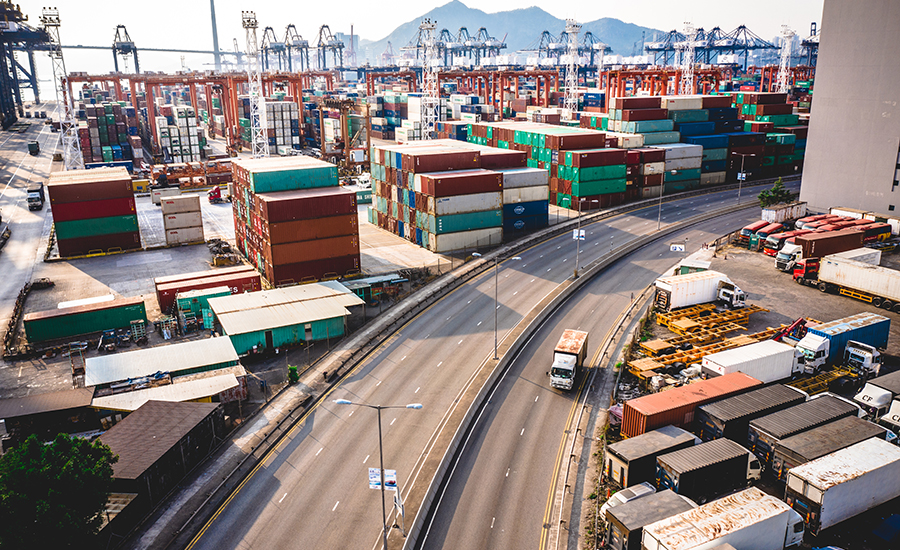
Supply chain issues, especially involving imported electronic components, are causing headaches for integrators and customers when it comes to budgeting and installation. // CHUNYIP WONG/E+ VIA GETTY IMAGES
Probably the biggest roadblock that could hamper the growth of video surveillance systems are the ongoing supply chain issues facing the industry and the world. In the SDM 2022 Industry Forecast, almost half (47 percent) of respondents named it as the top challenge to their companies in 2022 when asked to pick three, followed by finding/retaining employees (39 percent) and ongoing COVID-19 impacts (32 percent).
“The delays caused by equipment delivery and product availability is an issue that all integrators are currently facing,” says Jim DeStefano, senior vice president of Unlimited Technology Inc., Chester Springs, Pa. (SDM’s 2021 Systems Integrator of the Year) “This has changed the way we talk to our customers about timing of projects and when purchase orders need to be processed in order to meet deadlines. It has also required us to look at our buying practices and to maintain stock levels of those quick-turning products used on a regular basis.”
Roy Stephenson of integrator Utah Yamas Controls says his company’s normal practice of ordering product only when they’re ready to install is causing availability issues with specific cameras such as PTZ or multi-sensor cameras. “These are now on back order three or four months out at this point,” he says. “So we have had to be very flexible with our suppliers and have had to change products mid-stream in order to meet a client’s deadlines. … Our typical backlog might be four to five months, but the supply chain issue and the challenge of getting products is also adding to that backlog.”
John Nemerofsky of SAGE Integration reports that his company has placed orders for some panoramic cameras in October that will not be available until February 2022 because of the shortage of chips for servers and storage devices. Such unpredictable delays inevitably affect pricing for the end user. “Pricing becomes a big deal because the manufacturers’ new stance is that their prices are valid for seven days,” he adds. “Because most integrators are looking at going from quote to purchase order in 41 days, having pricing for only seven days presents real challenges.” This makes it especially important to have one-on-one conversations with both customers and manufacturers so everyone is in the loop on changes.
Maintaining adequate inventory is also important, even though this means more cash outlay on the front end, Nemerofsky adds. “We’ve stocked additional items like controllers, card readers, and cameras when we can — items that are staples that have a longer lead time and could be affected by pricing,” he says.
Blue Iron Sentinel, which exclusively uses Eagle Eye products, finds the company seems to be ahead of the curve in ensuring it can offer alternative products if needed, says Aric Foxhoven. “Not every camera model that was available before is now available, so you have to be flexible,” he says. “I do have a couple of projects that have about a six-month expected wait time for cameras, but everybody is being understanding. … Luckily it’s not a bulk of our business.”
Some manufacturers made modifications to their supply chain even before the pandemic, which left them in a better position now. “Well before the pandemic, Axis implemented a plan to bolster sourcing, manufacturing, and logistics in order to meet growing demand,” says Fredrik Nilsson. “During 2021, these investments helped us mitigate global supply chain issues and enhance our position throughout the pandemic.”
In many cases, this required establishing or ensuring the availability of offshore sources of product. For IDIS America, having its SmartFactory in South Korea up and running without interruption during the pandemic helped minimize supply chain issues, says Jeff Montoya. “We ensured that our integration partners were equipped with the stock they needed for projects to move ahead on schedule,” he adds.
Miguel Lazatin of Hanwha Techwin says, “Our company has pivoted and made sure that we are able to source the necessary components for our products to keep manufacturing moving and meet a lot of the product needs of our customers. Instead of putting our products in containers and having them shipped to the U.S., we’re air shipping a lot of product to alleviate back order issues and meet installation requirements of our customers. We’re doing a lot to make sure there’s business continuity in the channel.” And because North America is Hanwha’s largest market, its offshore suppliers are prioritizing the supply of components to there.
“2021 was unlike any other business year any of us have ever experienced,” says Peter Rampp, national sales director, security for Panasonic i-PRO Sensing Solutions Corporation of America, Rolling Meadows, Ill. “The effects of the pandemic carried over into 2021 with a vengeance, disrupting normal business and manufacturing practices and long-term business objectives that we had earmarked when the company was formally launched in 2019. The truth of the matter is, this helped accelerate many internal sales and operations initiatives we had previously identified, including the ability to rapidly adjust to market changes to better respond to the continually changing needs of our customers and reseller partners.”
Pent-up demand from projects put on hold during the worst of the pandemic drove much of this growth. “Opportunities have certainly been up as opposed to 2020, and even compared to 2019 pre-pandemic,” says Michael Thomas, CEO and president of Integrated Security & Communications, a full-service systems integration firm based in Millstone, N.J. The resumption of delayed projects in New York, Massachusetts, and California, coupled with demand for video products for screening and monitoring at facilities with reduced on-site presence, accounted for the company’s 2021 revenue growth.
“Having navigated to opportunities that were down through 2020 and the impact on the company helped position us,” he says. Though Thomas predicts supply chain issues may linger into late Q2 2022, he adds, “I think the market will be strong throughout 2022 and 2023, based on infrastructure bills and spending as well as continued catch-up from projects held and new opportunities.”
Many businesses sidelined by COVID-19 in 2020 scrambled to get up and running again in 2021 by introducing new safety protocols, says Richard Brent, CEO of Louroe Electronics, Van Nuys, Calif. “The need for physical security is omnipresent, especially in an evolving world,” he says. “It comes as no surprise to me that the demand for physical security infrastructure was a top priority among re-opening businesses, driving the market forward.”
Most sources echoed this message. “Pent-up demand from 2020 was certainly a factor to move the market forward in 2021,” says Kai Moncino, director of global business development, security, at Teledyne FLIR, Wilsonville, Ore. “Our primary customer base in critical infrastructure needed security systems despite all these challenges.”
That was certainly the case for Blue Iron Sentinel, an integrator based in Spring, Texas, that specializes in multifamily housing and outdoor festivals and markets. While the business took a major hit in 2020 when outdoor events — which comprised 60 percent of the business — began cancelling during the pandemic, business picked up again in 2021, and wound up more than doubling from 2019 numbers, says Aric Foxhoven, president. “It was a big surprise for us; we rebounded quickly,” he says.
Video Surveillance & Analytics Revenue Predictions
SDM asked, “How do you expect revenue from video surveillance systems and video analytics to change in the next year?”
Of those surveyed for SDM’s Industry Forecast, 64 percent expect revenue from video surveillance systems (on-premise and cloud-based) to increase, up 6 percentage points from the previous year; 32 percent expect it to remain the same, and 4 percent expect revenue to decrease. When asked about video analytics, however, 44 percent said they expect revenue to increase, 49 percent expect it to stay the same, and 6 percent expect revenue from video analytics to decrease. // SOURCE: SDM 2022 INDUSTRY FORECAST STUDY
Integrators that serve retail and restaurants were especially busy in 2021 as businesses bounced back after the shutdowns of the year before. “What a year!” Foley says. Interface started 2021 with a huge video surveillance system deployment for a major retailer seeking a shoplifting solution. Added growth throughout the year came from its drive-through and quick-service restaurant customers such as Applebee’s. “The industry performed admirably, between COVID-19, supply chain issues, and hiring,” he adds.
Utah Yamas Controls, a Salt Lake City integrator, saw overall sales jump 20 percent in 2021, in large part due to the sale of video systems. “[Video] has continued to grow and it’s an emerging market,” says Roy Stephenson, director of business development. Utah Yamas Controls has a strong vertical market presence in K-12 schools and higher education, more of which are exploring the use of video surveillance as a proactive tool to respond to threats and potentially dangerous situations, he says.
COVID-19 & Tech Advances Driving Demand
Societal changes at least partially arising from COVID-19 — more remote work, fewer in-person security guards, more construction sites that need monitoring, growing commercial space vacancy, and a dramatic spike in crime (see sidebar) link to sidebar 3 — are all contributing to the demand for video surveillance.
The intersection of these trends means the demand for video is going nowhere but up. Almost two-thirds of respondents to the SDM Industry Forecast survey, conducted in November 2021, expect their company’s revenue within the video surveillance category to increase in 2022.
According to “Trends in Video Surveillance 2022,” a report by cloud surveillance provider Eagle Eye Networks, more work-from-home options mean fewer employees returning to a traditional workplace — resulting in a much smaller worker density, which in turn affects the commercial real estate market. Eagle Eye cites statistics from global commercial real estate services firm Colliers International, which reported 13.6 million square feet of unoccupied office space in the United States during second quarter 2021, and global leasing volumes down about 30 percent.
2021 was generally a good year for the video industry because of the many end users adding cameras to protect these closed or underused facilities, says Brian Baker, chief revenue officer at Calipsa, an AI cloud analytics provider based in London. “Our business, primarily about false alarm reduction, did well with the greater emphasis on cameras to protect building perimeters, construction sites, and other facilities operating with reduced or no personnel and extended monitoring hours,” he says. “In some cases, monitored video was used as a virtual reception desk for offices as many employees worked from home.”
Technological advances in the industry also fueled growth. AI, cloud-based systems, and advanced analytics have expanded video capabilities as never before, helping businesses use their video surveillance systems not only for crime detection and deterrence, but also to improve operations and boost revenue.
Growing RMR

With COVID-19 issues hobbling traditional income, more integrators are relying on the stability of RMR income to stabilize their balance sheets. // UTAH778/ISTOCK / GETTY IMAGES PLUS VIA GETTY IMAGES
Advanced technology — specifically the cloud — is enabling the growth of RMR for integrators, says Bret McGowan, senior vice president of sales and marketing for Vicon Industries, Hauppauge, N.Y. “It’s not brand new, but it’s growing a footprint and gaining market acceptance. There are challenges for larger company installations, but as bandwidth increases, it will open the door for an increased number of cloud deployments. There is huge investment from financial institutions for RMR video and access control companies, which is where I predict we will see a trend.”
Timothy J. Dickson of Speco Technologies agrees. “We have seen a surge in demand from dealers and integrators looking for products that offer advanced analytic technology with an opportunity for RMR, especially in different categories like video surveillance and access control. COVID-19 has shined a light on how important analytics are when it comes to people counting, line crossing, and human and vehicle detection in highly sensitive areas.”
Chris Gilbert, president and founder of security integration firm Security Pros, Sellersburg, Ind, says his company leads with hosted solutions to customers across the United States and Mexico, serving several key vertical markets with larger camera and access control deployments. “Since our inception we have led with RMR-based services,” he says. “It’s all about wanting to create a stable company of value. We’ve seen a heightened sense of awareness around video and access control in the last year. Our clients are realizing they could use our solutions as operational tools in new ways, which is what we’ve been telling them about for 10 years.”
Gilbert says his hosted access control business is up 67.6 percent year-over-year from 2020 to 2021, hosted video is up 1,825 percent, and managed services contracts are up 61 percent. Overall, Security Pro’s RMR services are up 76 percent.
Security Pro’s focus is on custom-designed solutions. This makes it easier to use an RMR model, because it makes sense for customers’ budgets, Gilbert says. “All of our departments — sales, technicians, admin staff, everyone — are making a big effort to teach customers about hosted services. The culture here is that we are a recurring services company. In fact, we’re expanding our finance team to make sure that our RMR billing is customer centric. The entire company is focused on creating the RMR model.”
Interface Systems also expects to see a “material rise” in RMR in 2022. “RMR is the lifeblood of our company and many others; it represents over 85 percent of our revenue stream,” says Sean Foley. “That is the model we’re built on, so it has historically been the case. However, the RMR has taken a larger share of our total revenue stream over the last several years. A big part is as you become more solutions-oriented, it lends itself to recurring services, not just installing a piece of equipment. … That is simply a mechanism, a delivery vehicle for an actual solution that needs to be supported, upgraded, and monitoring. RMR is a big piece of the action for Interface and a growing piece.”
“Historically, a camera is a dumb device that just records video,” says Foley of Interface. “But now a camera can tell us if a person is present in a facility, and whether they should be there. It tells us whether a vehicle is moving or not, what its license plate is, and should it be where it is. Facial recognition tells if someone is authorized or a repeat offender. That’s mission critical, and will require alarm monitoring operations throughout the country and world to permanently convert what they do.”
Kaveh Malakuti, director, video product management, access control and video services global products, Johnson Controls, Cork, Ireland, says that while the company already had plans to develop technology such as thermal cameras, social distancing analytics, and occupancy counting, those plans were accelerated by the immediate need to develop tools quickly for businesses dealing with social distancing and managing occupancy. “The fact that there were those space restrictions for a while in 2020 meant that a lot of the installation work required additional steps, which hindered deployments for the general market, but other places like schools and commercial buildings saw an uptick,” Malakuti adds.
Similarly, Teledye FLIR saw a massive COVID-19-driven sales spike for elevated skin temperature screening FLIR products in 2020, followed by a return to traditional security business in 2021, Moncino says. “We have seen renewed strong demand for our perimeter security solutions for critical infrastructure, which includes both thermal and visible imaging products as well as other sensing technologies such as radar,” he adds.
The current “great resignation” in the workplace is also spurring video’s growth, says Sam Joseph, CEO and co-founder of Hakimo, a computer software company based in Menlo Park, Calif. “Guard companies are having a hard time ensuring they have proper staffing due to manpower shortages,” he says. “We are also seeing crime rates increase, elevating the importance of security. To address these issues, technology has had to step in to handle tasks that we once relied upon humans to handle and this includes monitoring access control and surveillance systems. For example, artificial intelligence has become adaptive and we’ve seen an acceleration in its development to help automate processes on the security side. We can now leverage AI to monitor a security system and automate the response when the system detects a problem.”
Another high-level trend spurring video growth is the need to update cameras as they reach the end of their functional life, says Trevor Stewart, president and CEO, Security Control Integrators, Pine Brook, N.J. While analog cameras have been available for decades, prior upgrades centered on a need for better function and resolution. In contrast, “IP cameras require quicker swaps in order for the system to meet NDAA compliance requirements,” he says. (The John S. McCain National Defense Authorization Act 2019 [NDAA] is a United States federal law which specifies the budget, expenditures and policies of the U.S. Department of Defense.) “As their OS ages and their firmware requires updates, these cameras need to be updated. As physical and cybersecurity have increasingly overlapped, the required level of security cameras has changed. We’re not just looking at whether cameras are still functional, but are also aiming to ensure annually that those cameras are still meeting the client’s cyber risk needs.”
Cloud-Based Video Offerings Increase for 2022
SDM asked, “Which managed or cloud-based services do you currently offer and plan to offer?”
Sixty-four percent of security professionals currently offer remote video monitoring, with 69 percent planning to offer it, up two percentage points from last year. Sixty-three percent currently offer Video Surveillance as a Service (VSaaS), up 7 percentage points from the previous study. // SOURCE: SDM 2022 INDUSTRY FORECAST STUDY
The Big Enablers: AI, Cloud, & Data Analytics
Technologies including the cloud, AI, edge, machine learning, data analytics, and more are powering new video surveillance capabilities. Other tech trends our sources mentioned were mobile video, body-worn cameras, health monitoring, weapons detection, enhanced video quality, and an increased focus on cyber hygiene and health.
“The security industry is always a couple of years behind the IT industry,” says Simon Morgan, chief product manager at SureView Systems, a PSIM platform provider based in Tampa, Fla. “If you look at IT, there’s been an across-the-board move to cloud computing. Our industry started the shift just before the pandemic. More of the technology is going to the cloud. And as it does, there is much more openness toward integrations, standards, and bringing in signals from disparate systems. Then you have the capabilities of leveraging artificial intelligence. Everything starts with movement toward the cloud, opening a massive ecosystem of different systems you can integrate and interface with.”
However, issues remain around the integration between systems, cautions Thomas of Integrated Security & Communications. “I think the video industry still has some challenges for real cloud-based video solutions,” he says. “There are vulnerabilities in the solutions available today, whether it’s due to connectivity or network resilience. Most solutions are still a hybrid where an NVR is still required. But solutions for web-based user interfaces for viewing or playback from virtually any device has been welcomed. We do see that as an area that will continue evolving.”
Dean Drako, CEO and founder of Eagle Eye Network, Austin, Texas, says he was a “cloud evangelist” as far back as 2010, when most of the industry was still using Windows via on-premise computers. “Until four years ago, I felt like a one-man band without a big audience,” he says. “Since then, everything’s changed; cloud is now popular and there are competitors in the game.” One of the cloud’s greatest advantages is the ability to apply AI to expand video capabilities. “We’re investing very heavily in AI to apply to video surveillance and change how it’s actually used, making it more useful.”
Security Professionals’ Perception of the Video Analytics Market
SDM asked, “What is your current perception of the video analytics market?”
Video surveillance systems are still the top most commonly offered security product or service, with 85 percent of professionals currently offering, up 7 percentage points from last year’s study. Another 7 percent plan to offer video in the next one to two years; 4 percent plan to offer it in the next three to five years, and just 4 percent don’t plan to offer video at all. // SOURCE: SDM 2022 INDUSTRY
Ed Pederson, vice president of integrator and distribution sales video systems at Bosch, Fairport, N.Y., uses the term “AIoT” — a mash-up of AI and IoT — to describe what he’s seeing in the industry. “Video is becoming more about intelligent, data-based solutions than collecting high-quality images and storing them for the record,” he says. “The key to this is combining artificial intelligence with the Internet of Things. AIoT helps strengthen security and safety and enables new uses beyond security. When cameras and AIoT are combined, they become intelligent sensors that can provide information on activity or states of objects in an area. These smart sensors enable data-driven solutions that provide business insights to bring new value to organizations. There are many applications for AIoT video systems, and the possibilities for tailoring solutions to meet specific customer requirements are endless.”
Expanding video’s focus from a stand-alone product to a multi-layered tech solution is changing the game in the electronic security industry, says Tim Palmquist, vice president of the Americas, Milestone Systems, Lake Oswego, Ore. “The increasingly IT-centric influence to solving physical security problems brings a diverse, new dynamic to the conversation,” he says. “Systems integrators will have to be flexible enough to meet the objectives of end users and understand how to navigate new conversations that might otherwise begin or end abruptly without the right answers or a solutions-focused mindset.”
Kyle Hurt, senior director of sales, USA, Genetec, Montreal, agrees that the cloud and hybrid cloud solutions are revolutionizing the video industry. “Cloud is the solution that allows many enterprises to do things differently today,” he says. “Some were hesitant to look at cloud before now are looking at cloud as a way they can actually scale their operations.”
For Interface, the big driver of new services in terms of virtual guard monitoring is the ability to interact with live audio and video, and analytics — as Foley explains, “Moving from a security focus to recurring services that even more directly impact a retailer’s bottom line. We’re looking for ways for them to increase revenue and margins.”
Timothy J. Dickson, vice president, sales and marketing of Speco Technologies, Amityville, N.Y., says that his company’s biggest change came from having a full suite of advanced analytics that includes facial recognition, license plate capture cameras, human/vehicle detection, and more. “As more installers look to add value, these analytics features become more and more critical to their sales offering,” he says.
Based on demand from the pandemic, Honeywell Building Technologies, Atlanta, is integrating video analytics functions such as people counting with other solutions across its portfolio, such as using indoor air quality sensors to determine how much fresh air to circulate in highly populated spaces, says Vijay Dhamija, global video engineering leader. “Using COVID-19 as a springboard, we’re focused on helping our customers create healthier building environments and simplifying tasks as much as possible.”
More End Users Concerned About Crime
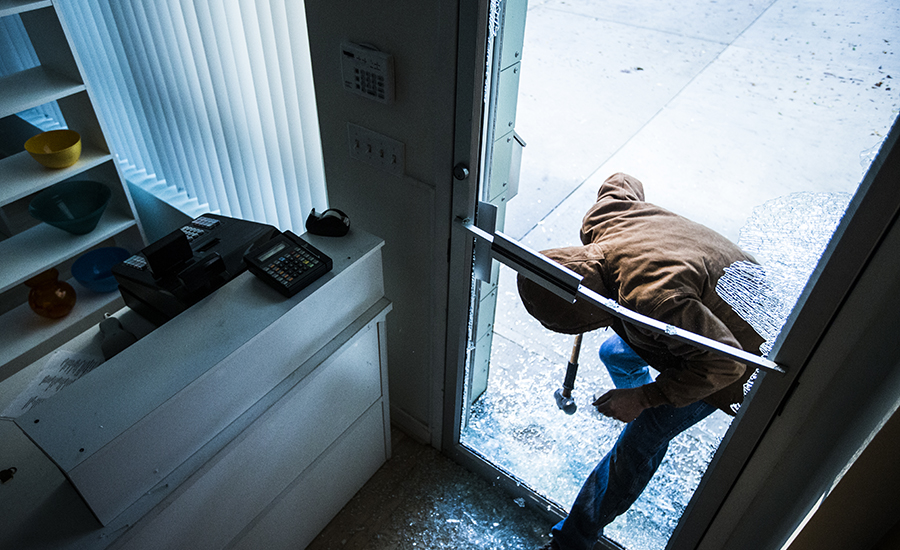
Increases in pandemic-related criminal activity — from organized smash-and-grabs to unruly customers attacking store employees — are especially hard-hitting for retailers. // STEVECOLEIMAGES/E+ VIA GETTY IMAGES
For integrators specializing in the hospitality, restaurant, and retail industries, increased security is a dominant issue, especially in light of the recent spike in crowd-sourced violence at high-end retailers in cities like San Francisco, Chicago, and Beverly Hills.
“The world has changed a lot over the last year and a half, and with it, the retail environment,” says Sean Foley of Interface. “Two years ago, you’d do your shopping and not think about it. Today you’ve got smash and grabs you’re seeing in the news, people getting into fights with store clerks about whether or not to wear a mask, the kind of political polarization that just randomly explodes and sometimes on the floor of a retailer, drive-through or dining room. It’s a lot more tense now, and it means folks are concerned about security and looking for solutions. It’s an opportunity for integration and solution providers who can tackle that and are willing to make the investment.”
Interface’s business niche is restaurants and retailers, which are especially targeted for shoplifting by organized retail criminals. “While this is what’s making it to the major news outlets, for us, internal theft, vagrancies, disruptions with customers are day-to-day affairs,” Foley says. “There are agents in our monitoring operation right now dealing with shoplifters, so that has been a bit of a boon for our organization because it’s just so hot right now.”
Part of the video solutions Interface provides are specific to stemming internal theft, shoplifting, or retail “shrink,” he says. Thanks to new technology, these businesses can access an alarm monitoring operation that allows agents using live video and two-way audio to address a shoplifter, problem customer, robber, or burglar. “It really has taken on a new level of importance, both during and post COVID,” Foley says. “It’s always a revenue driver for an organization like Interface.”
Pre-pandemic, many of Interface’s customers relied on security guards to thwart crime. But many businesses no longer have the resources to hire guards, who are in short supply due to larger workplace issues. This is where modern video surveillance systems come in. “The margins in retail with limited exceptions don’t justify having a person with a gun standing there 24/7,” Foley says. “At best that’s a $75,000 a year proposition and in certain markets, double that.”
Shifting Focus From Crime to Business Improvement
While all these technology advances are expanding the use of video surveillance, business owners are beginning to realize what the electronic security industry has been trying to tell them for years: they can use video surveillance systems for much more than crime deterrence. “It never quite sells itself, but I find that the demand for video from folks we weren’t speaking to previously has increased, like retailers and restaurants that previously took the view of, ‘I don’t really know if I need cameras in my facility,’” Foley says. “It’s just a little bit different now, and it goes back to COVID, to some degree.”
Drako of Eagle Eye explains, “Customers are starting to use cameras not just to figure out what went wrong, but to analyze what’s going on now so they can learn and make their businesses run better.” For example, a retailer whose video shows too many people at a checkout line can add more clerks or automated checkout, or a grocery store can quickly deploy a clean-up team when a customer breaks a bottle, he says. “We had someone running a sandwich shop, and the manager used video to see that sandwiches were being made consistently,” he says. “Folks are using it in warehouses for safety reasons, and businesses are doing lots of things to make them operate better, safer, and stronger versus just a bunch of security cameras to stop crime. Business applications are expanding.”
Integrator Blue Iron Sentinel is currently working on a project for a remotely located oil field services company project in North Dakota. The client needs video to not only monitor the site against theft and vandalism, but also as a safety and advanced liability monitoring system to ensure employees use adequate PPE and stay clear of dangerous areas. “Some of the projects I’m working on in oil and gas use cameras, sensors, and advanced analytics or AI to help provide safety and security to multiple sites,” Foxhoven says. While oil and gas currently comprise less than 5 percent of Blue Iron’s revenue, if the project pilots well, it will more than double the business, he adds.
Video Surveillance Systems Still the Most Commonly Offered Security Product
SDM asked, “Which products and services do you currently offer or plan on offering?”
Video surveillance systems are still the top most commonly offered security product or service, with 85 percent of professionals currently offering, up 7 percentage points from last year’s study. Another 7 percent plan to offer video in the next one to two years; 4 percent plan to offer it in the next three to five years, and just 4 percent don’t plan to offer video at all. // SOURCE: SDM 2022 INDUSTRY
2022 Outlook: More Growth, With Some Caveats
With a few exceptions, most video suppliers and integrators predict they’ll see growth in 2022 that will equal or exceed the 2021 performance, in spite of current omicron uncertainties. This is backed up by the 2022 SDM Industry Forecast study, where 64 percent of respondents said they expected revenues from video surveillance to grow in 2022, while 44 percent predicted the same for video analytics.
“The world economy is set to continue the rebound,” says Brad McMullen, general manager at 3XLOGIC, Fishers, Ind. “Businesses and people are ready to get back to a more normal type of work environment. However, there will continue to be opportunities to provide new solutions because of the continued impact of COVID-19 on work — return to work solutions, occupancy management, remote video solutions, and more.”
The government’s focus on improving infrastructure will also provide growth for the video industry, says Aluisio Figueiredo, CEO, Intelligent Security Systems (ISS), Woodbridge, N.J. “Governments are putting up money to heat up the economy and those type of investments translate to us,” he says. “That’s right in our wheelhouse: highways, airports, train stations.”
But these overhauls will require integrators and manufacturers to be flexible enough to go beyond plain vanilla products and services, he adds. For example, New York’s subway system has different needs than Washington or Los Angeles, and integrators and manufacturers must be flexible enough to address those needs. “The biggest change in our company is the focus on sophisticated solutions, to pick markets where we can add value, not be a generic solution, but be very specialized.”
John Nemerofsky, chief operating officer of SAGE Integration in Kent, Ohio, reports that all of his current clients are projecting substantial growth to their video platforms in 2022, using more analytics and cloud than ever before. SAGE is seeing more rollouts around parking management, logistics, building management, and retail at point of sale to support workforce shortages and continued construction growth.
Miguel Lazatin, senior director of marketing for Hanwha Techwin America, says, “We’re very positive moving into 2022 and beyond. Our company has made the commitment to driving this business within this industry and has demonstrated our investment in technology, including a $100 million manufacturing facility in Vietnam for security products.” Having the resources to source components when other manufacturers may not will provide a competitive advantage, he adds.
Hikvision USA, a security equipment manufacturer in City of Industry, Calif., is positioning itself to take advantage of the growing need for security in an uncertain world. “We believe demand will remain strong as surveillance systems continue to serve a vital role in today’s world,” says John Xiao, vice president marketing. “The need for security systems that solve real-world problems will remain, such as quicker identification of suspects with easier video searches — and those solutions that offer business intelligence, such as heat mapping and occupancy control. End users will be responsive to solutions that can deliver results in a variety of budgets and applications.”
However, others urge caution, especially in light of ongoing supply chain issues. For security integrators, delivery of product will be a continuing issue while for manufacturers, the concern will be the availability of components, says Frank “Skip” Haight, vice president of marketing for Communication Networks (ComNet), Danbury, Conn. “The components of our products come from manufacturers globally,” he says. “We’re still finding critical parts shortages that affect delivery and production on our end. If an integrator is going to need a product by a particular date, starting the purchase process as early as possible is going to be a major benefit to getting projects completed on time.”
While he’s expecting to see big growth in the logistics, education, hospitality, education, cannabis, and residential markets, the chipset shortage is a global concern for manufacturers, says Jeff Montoya, Eastern regional sales director at IDIS America, Coppell, Texas. “Rising inflation and economic instabilities will likely impact some sectors moving into 2022,” he says. “IDIS works closely with systems integrators to identify and secure video projects in post-COVID growth and resilient sectors.”
Other concerns are more technological in nature. “Aside from dealing with the possibility of new end-user facility lockdowns that prevent integrators from providing anything other than emergency or remotely managed services, the adaptation and deployment of newly integrated system models will be (integrators’) biggest challenge,” says Rampp of Panasonic i-PRO. “There are many new IoT devices and software technologies emerging that require a higher level of integration and network expertise. Integrators need to follow these developments and learn how they can leverage them to sustain and increase business.”
Integrators are continually challenged to think outside the box and keep pace with what’s new, says Eddie Reynolds, CEO and president of iluminar Inc., an Irvine, Calif.-based provider of CCTV lighting products and license plate reader cameras. “The definition of security is expanding to include things such as thermometers, gloves, and air purifiers, so integrators are going to have to educate themselves on how they best incorporate these products into their offerings,” she says.
This means that expectations are higher for integrators to provide more sophisticated services than they have in the past, Figueiredo says. “[In the past] the guy would just come with a box of cameras, connect the wires, flip the switch, and they’re done. If something goes wrong, they come back and restart the machine,” he says. “Today it’s much deeper than that. It requires integration; it requires troubleshooting on a different level.” He believes this is the biggest challenges facing today’s integrators. “I think those integrators that do not reinvent themselves short term are going to be obsolete. They have to cope with this technology, they have to staff them properly, to be able to troubleshoot sophisticated systems.”
Finally, the ongoing impact of COVID-19 is the big question mark in 2022 and beyond. “I think we’ll grow a similar amount in 2022 because of the investment we’re making in AI and how customers will utilize it,” says Drako of Eagle Eye. “The pandemic is a challenge; we thought we were out of it a few weeks ago, but now there are lockdowns again. Who knows what it will hold? But I think for us, people are relying more on video surveillance. They want more, and customers want to move to the cloud, so it bodes well for our future.”
